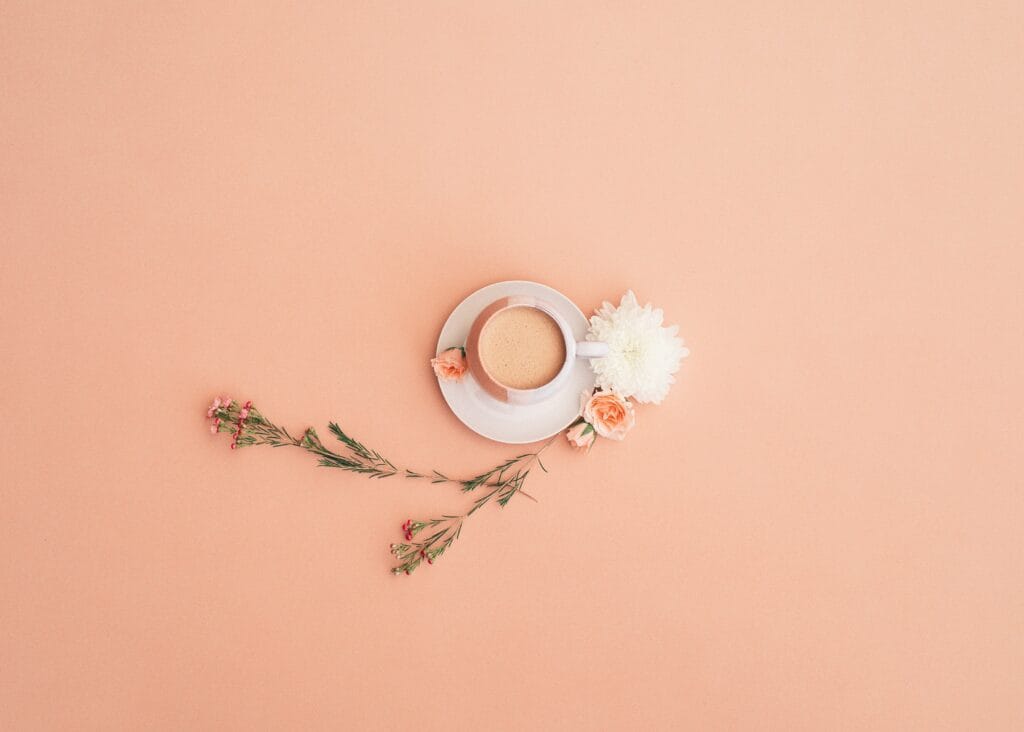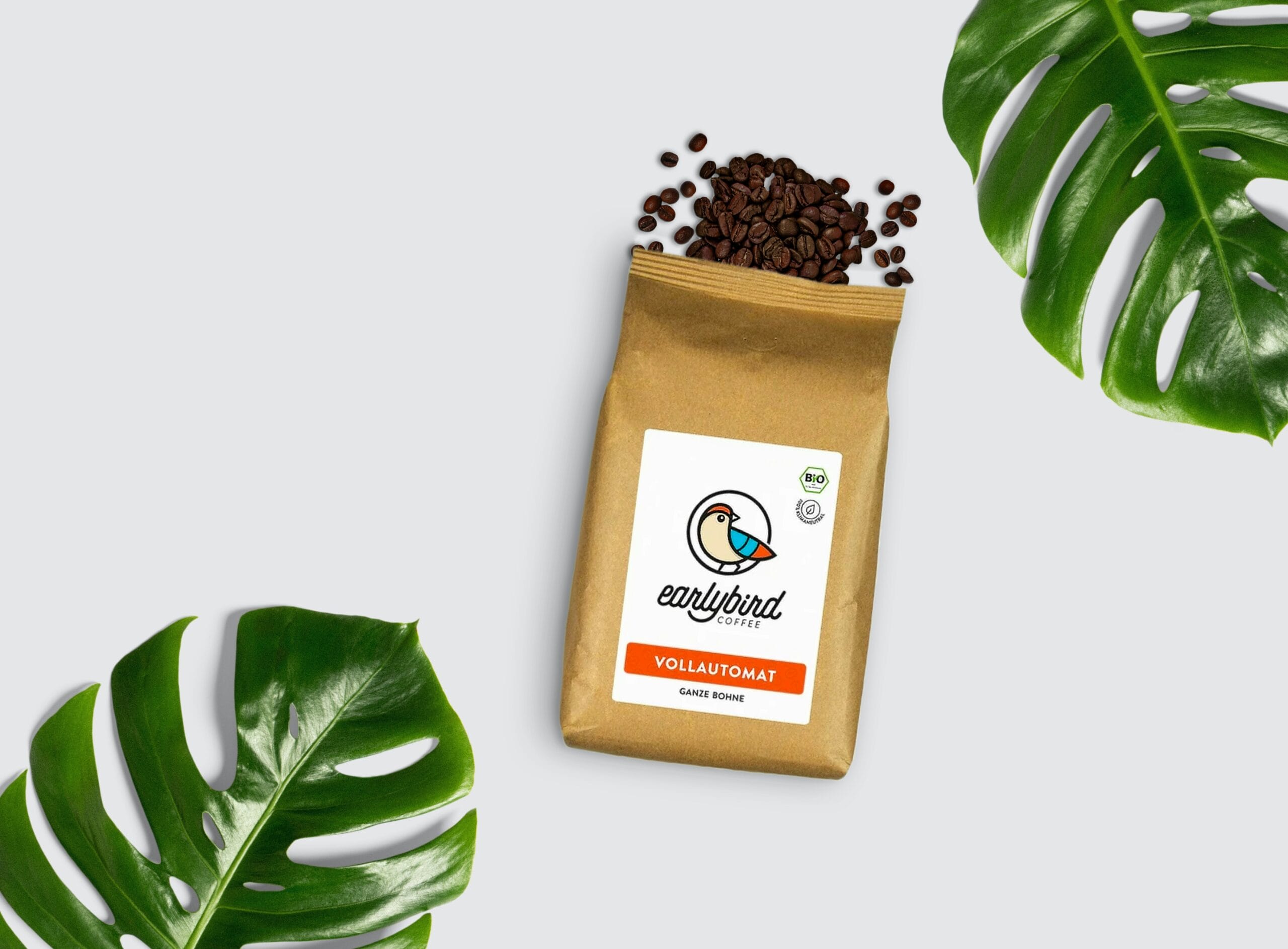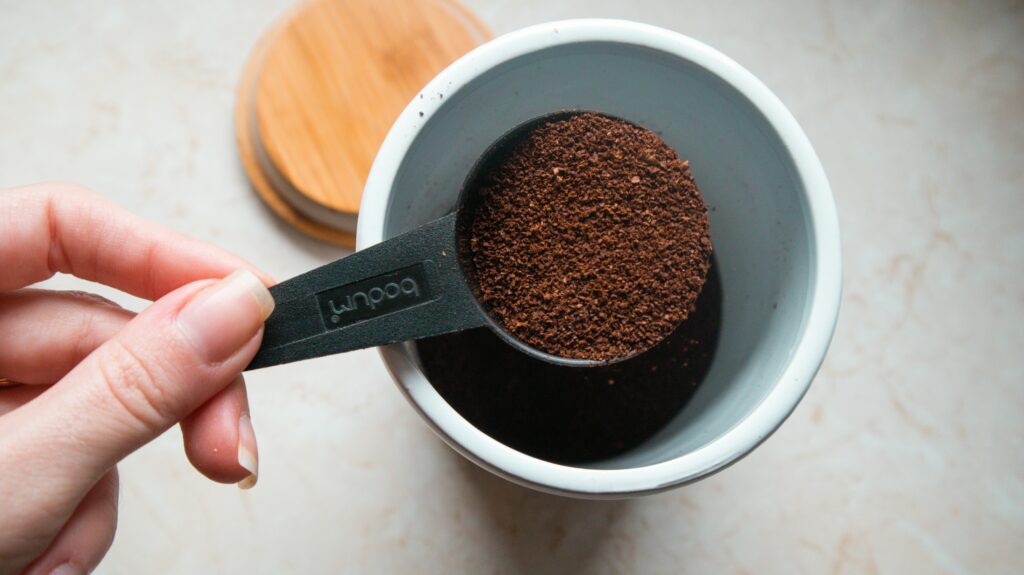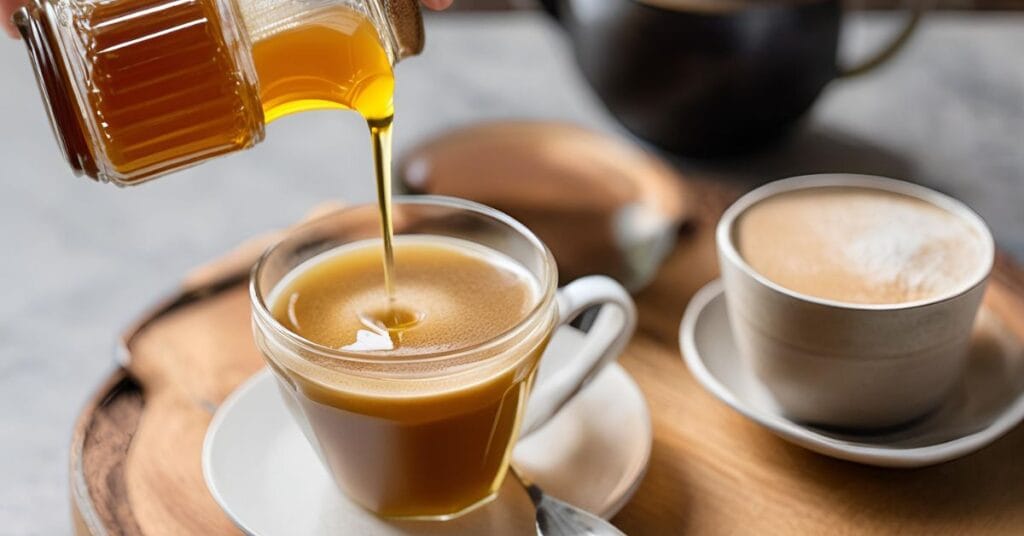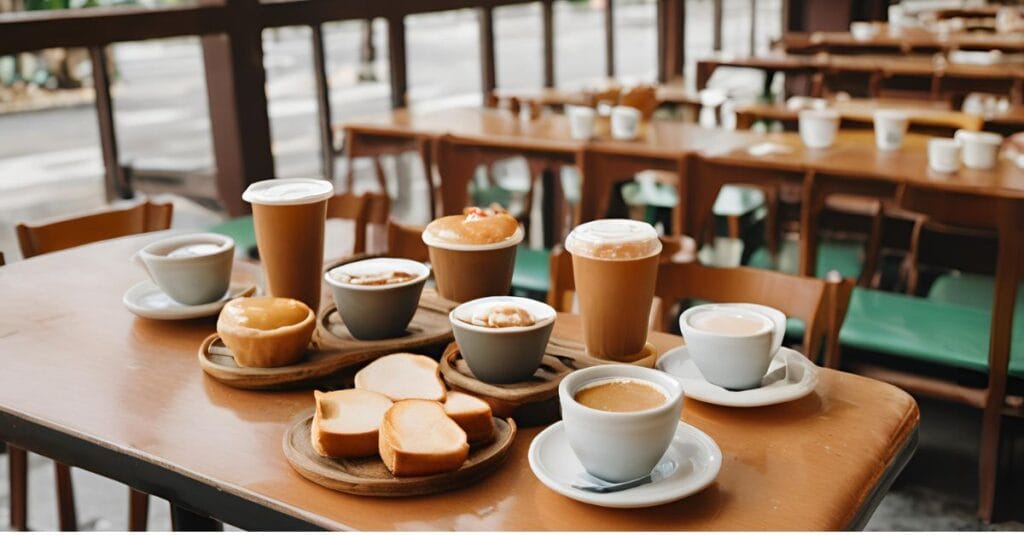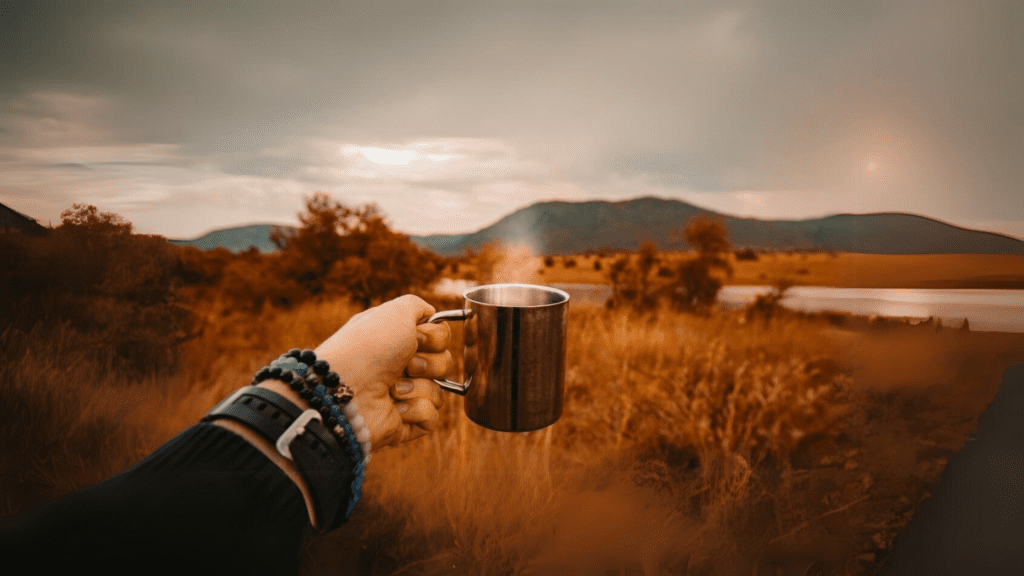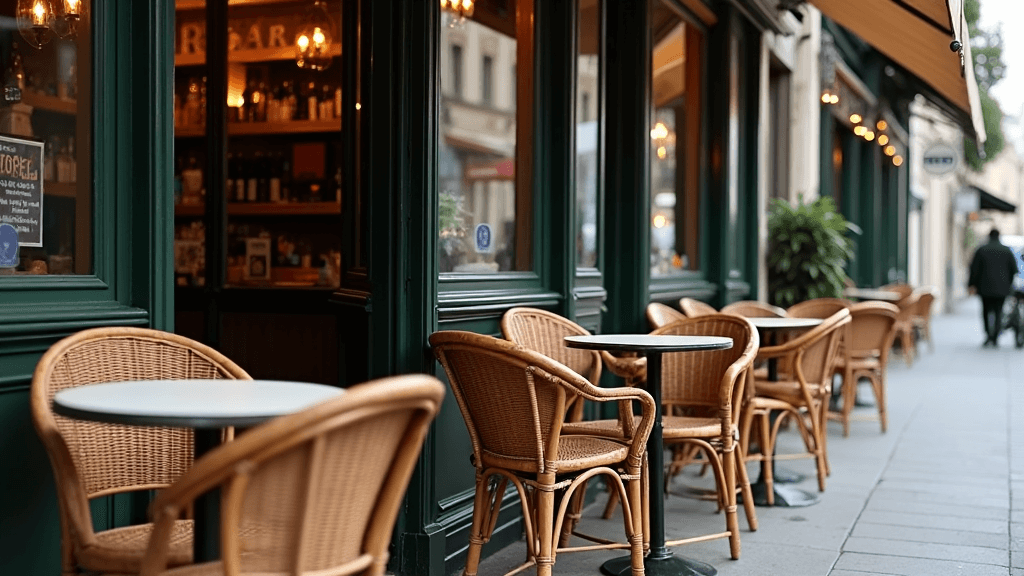I’ve always been curious about how much caffeine I’m getting when I snack on chocolate-covered espresso beans. If you’ve wondered the same, let’s break it down together! By the end, you’ll know exactly how to enjoy your next coffee bean snack with confidence. So lets know about how many chocolate-covered espresso beans equals a cup of coffee?
Table of Contents
ToggleCan You Eat Espresso Beans?
Absolutely! Espresso beans are not just edible; they’re packed with flavor and caffeine. Like many coffee lovers, I prefer eating them for a quick energy boost. The chocolate-covered version makes it even better, combining that deep coffee flavor with a bit of sweetness.
If you’re ever wondering about brewing the perfect cup instead, try our Ultimate Coffee Brew Calculator to calculate your ideal water-to-coffee ratio for every brew.
How Many Espresso Beans Equals a Cup of Coffee?
So, how many espresso beans does it take to match the caffeine in a cup of coffee? On average, 10-20 chocolate-covered espresso beans provide the same caffeine as an 8-ounce cup of coffee. This varies depending on the size of the beans, type of roast (Arabica or Robusta), and the thickness of the chocolate coating. Dark chocolate, in particular, can increase the caffeine content slightly more than milk chocolate.
Factors That Affect Caffeine Content:
Bean Type: Arabica beans are the most commonly used for chocolate-covered espresso beans. They generally contain 6-10 mg of caffeine per bean, while Robusta beans have more caffeine but are less common due to their bitter flavor(CoffeeReviews)(Latte Love Brew).
Chocolate Type: The type of chocolate coating plays a big role. Dark chocolate has more caffeine than milk chocolate. For example, 85% dark chocolate contains up to 22 mg of caffeine per ounce, while milk chocolate contains only 9 mg per ounce(FAQ Kitchen).

A single chocolate-covered espresso bean contains approximately 6-13 mg of caffeine, depending on the bean and chocolate type. You would need about 10-20 beans to equal the caffeine in a standard 95 mg cup of coffee.
How Many Espresso Beans Equals a Cup of Coffee?
So, how many espresso beans does it take to match the caffeine in a cup of coffee? On average, 10-20 chocolate-covered espresso beans provide the same caffeine as an 8-ounce cup of coffee. This range varies based on the bean size, type of roast (Arabica or Robusta), and the thickness of the chocolate coating.
Factors That Affect Caffeine Content:
Bean Type: Arabica beans are the most commonly used for chocolate-covered espresso beans. They generally contain 6-10 mg of caffeine per bean, while Robusta beans have more caffeine but are less common due to their bitter flavor(Coffee Reviews)(Latte Love Brew).
Chocolate Type: The type of chocolate coating plays a big role. Dark chocolate has more caffeine than milk chocolate. For example, 85% dark chocolate contains up to 22 mg of caffeine per ounce, while milk chocolate contains only 9 mg per ounce(FAQ Kitchen).
Let’s Break It Down:
| Item | Caffeine Content (mg) |
|---|---|
| Standard cup of coffee (8 oz) | ~95 mg |
| Single espresso bean | 6-10 mg |
| 10-20 chocolate-covered beans | ~95-120 mg |
Pro Tip: If you prefer a stronger caffeine boost, choose dark chocolate-covered beans since they contain more caffeine than milk chocolate ones.
How Does Eating Espresso Beans Compare to Drinking Coffee?
Eating whole espresso beans gives you a faster caffeine hit than drinking coffee. Since you’re consuming the entire bean, you absorb caffeine faster than you would from a brewed cup, where the caffeine is diluted by water. This makes espresso beans ideal for a quick energy boost.
Scientific Insight: Research has shown that caffeine absorption from solid foods like espresso beans is faster than from liquids. You can expect to feel the effects of espresso beans within 5-10 minutes, while brewed coffee may take longer.
The Impact of pH and Acidity on Espresso Beans
Espresso beans have a pH level of 4.5 to 5, making them mildly acidic. Espresso’s acidity level is often discussed in terms of flavor but also influences how your body absorbs caffeine. Darker roasts tend to have a lower acidity, which can make them easier on the stomach for some people.
Health Benefits of Eating Espresso Beans
Aside from the energy boost, espresso beans offer several health benefits:
Antioxidants: Espresso beans are rich in antioxidants like polyphenols and flavonoids, which help reduce inflammation and support heart health.
According to the Journal of Agricultural and Food Chemistry, coffee beans are one of the richest sources of antioxidants.
Low-Calorie Snack: Even with the chocolate coating, espresso beans are relatively low in calories compared to other sweet snacks. A small handful gives you an energy boost without overindulging.
Mental Clarity and Focus: The combination of caffeine and antioxidants improves focus and cognitive function, giving you a mental boost along with physical energy.
How Many Espresso Beans Is Too Much?
While espresso beans are a tasty way to get your caffeine fix, it’s important to avoid overconsumption. Eating too many beans can lead to caffeine overload, which can cause jitters, anxiety, or trouble sleeping.
Recommended Limits:
- If you’re sensitive to caffeine, stick to 10-15 beans. This provides the same caffeine as one cup of coffee without overwhelming your system.
- If you have a higher tolerance, you can consume 20-30 beans, which is equivalent to about two cups of coffee.
Pro Tip: To avoid caffeine overload, monitor your total caffeine intake, especially if you’re drinking other caffeinated beverages like coffee or tea.
Chocolate-covered espresso beans are a sweet and powerful way to enjoy your caffeine—each bite brings you closer to the buzz of a full cup of coffee.
Ahmed Kamran
The Difference Between Espresso Beans and Regular Coffee Beans
Espresso beans are simply dark-roasted coffee beans designed for making espresso. They are roasted longer than regular coffee beans, which gives them a deeper, more intense flavor. In contrast, regular coffee beans may be lighter roasted and used in other brewing methods. The additional roasting also makes espresso beans softer, which is why they are used in chocolate-covered espresso beans.
Here’s a comparison table between espresso beans and regular coffee beans based on various factors like roast, caffeine content, flavor, and use:
| Characteristic | Espresso Beans | Regular Coffee Beans |
|---|---|---|
| Roast Level | Darker roast (typically dark roast) | Varies (light, medium, dark) |
| Caffeine Content | Lower caffeine per bean due to darker roast, typically 6-12 mg per bean. | Higher caffeine per bean, especially in lighter roasts, around 6-15 mg depending on type |
| Bean Type | Usually Arabica but can be Robusta | Often Arabica, but Robusta is common too |
| Grind Size | Finely ground for espresso machines | Coarser grind for drip coffee or French press |
| Flavor Profile | Rich, bold, intense, less acidic | More variable: can be light, fruity, or acidic depending on roast. |
| Brewing Method | Primarily for espresso machines | Used in various methods like drip, French press, or pour-over |
| Acidity Level | Lower acidity due to longer roasting time | Higher acidity, especially in lighter roasts |
| Primary Use | For making espresso shots, and in drinks like lattes or cappuccinos | Used in various types of coffee drinks, from drip coffee to cold brew |
| Caffeine Release Speed | Slower release due to solid form when eaten | Faster release when brewed into liquid coffee |
| Popular Pairing | Often consumed as chocolate-covered espresso beans or as a shot | Typically brewed as regular coffee or cold brew |
Summary:
- Espresso beans are roasted longer, resulting in a bolder flavor with lower acidity and typically lower caffeine content per bean. They’re often used for making espresso shots and can also be eaten as chocolate-covered espresso beans.
- Regular coffee beans have a broader range of roasts, leading to more varied flavors and caffeine levels. They’re brewed in multiple methods, from pour-overs to cold brews.
This comparison highlights the specific uses and characteristics of both types of beans, helping coffee lovers choose the right one for their preferences!

How Do Espresso Beans Compare to Other Caffeinated Snacks?
Other caffeinated snacks, such as energy bars or coffee-flavored candies, often contain much lower levels of caffeine. For example, an energy bar might only contain 50 mg of caffeine, while a typical serving of chocolate-covered espresso beans delivers 120-180 mg, making them a more concentrated source of caffeine.
How Much Caffeine Is in Popular Coffee Drinks?
When looking at the caffeine content of various coffee drinks, we see considerable variation depending on the type and size of the beverage. For example, a brewed coffee from Starbucks contains significantly more caffeine than a flat white or cappuccino. While an average cup of brewed coffee contains around 120 mg of caffeine, let’s explore the specific caffeine levels of popular coffee drinks across different sizes.
Caffeine Content in Popular Coffee Drinks by Size
| Drink Size | Brewed Coffee | Café Latte | Cappuccino | Flat White | Espresso | Latte Macchiato | Café Mocha |
|---|---|---|---|---|---|---|---|
| Short (8 oz) | 155 mg | 75 mg | 75 mg | 130 mg | 75 mg (solo) | 150 mg | 95 mg |
| Tall (12 oz) | 235 mg | 75 mg | 75 mg | 130 mg | 150 mg (doppio) | 150 mg | 95 mg |
| Grande (16 oz) | 310 mg | 150 mg | 150 mg | 195 mg | N/A | 225 mg | 175 mg |
| Venti (20 oz) | 410 mg | 150 mg | 150 mg | 195 mg | N/A | 225 mg | 185 mg |
It is crucial to stay within the recommended 400 mg per day limit for healthy adults and 200 mg per day for pregnant women. This table can serve as a helpful guide to ensure you’re not exceeding safe caffeine levels.
When looking at the caffeine content of various coffee drinks, we see considerable variation depending on the type and size of the beverage. For example, a brewed coffee from Starbucks contains significantly more caffeine than a flat white or cappuccino. While an average cup of brewed coffee contains around 120 mg of caffeine, let’s explore the specific caffeine levels of popular coffee drinks across different sizes.
Caffeine Content in Popular Coffee Drinks by Size
| Drink Size | Brewed Coffee | Café Latte | Espresso |
|---|---|---|---|
| Short (8 oz) | 155 mg | 75 mg | 75 mg (solo) |
| Tall (12 oz) | 235 mg | 75 mg | 150 mg (doppio) |
| Grande (16 oz) | 310 mg | 150 mg | N/A |
| Venti (20 oz) | 410 mg | 150 mg | N/A |
It is crucial to stay within the recommended 400 mg per day limit for healthy adults and 200 mg per day for pregnant women. This table can serve as a helpful guide to ensure you’re not exceeding safe caffeine levels.

How Many Chocolate-Covered Espresso Beans Equal Popular Coffee Drinks?
If you’re curious about how many chocolate-covered espresso beans you’d need to eat to match the caffeine content of these drinks, we’ve broken it down into a simple table. With each chocolate-covered espresso bean containing about 6-12 mg of caffeine, this gives you a fun and practical way to compare!
| Drink Size | Brewed Coffee | Café Latte | Cappuccino | Flat White | Espresso | Latte Macchiato | Café Mocha |
|---|---|---|---|---|---|---|---|
| Short (8 oz) | 12 Beans | 6 Beans | 6 Beans | 10 Beans | 6 Beans (Solo) | 12 Beans | 7 Beans |
| Tall (12 oz) | 19 Beans | 6 Beans | 6 Beans | 10 Beans | 12 Beans (Doppio) | 12 Beans | 7 Beans |
| Grande (16 oz) | 25 Beans | 12 Beans | 12 Beans | 16 Beans | N/A | 18 Beans | 14 Beans |
| Venti (20 oz) | 34 Beans | 12 Beans | 12 Beans | 16 Beans | N/A | 18 Beans | 15 Beans |
This table rounds down to the nearest whole bean, ensuring you don’t exceed safe caffeine levels or overstimulate yourself. Whether you’re grabbing a coffee on the go or munching on espresso beans, now you can confidently monitor your caffeine intake!
If you’re curious about how many chocolate-covered espresso beans you’d need to eat to match the caffeine content of these drinks, we’ve broken it down into a simple table. With each chocolate-covered espresso bean containing about 6-12 mg of caffeine, this gives you a fun and practical way to compare!
| Drink Size | Brewed Coffee | Café Latte | Espresso |
|---|---|---|---|
| Short (8 oz) | 12 Beans | 6 Beans | 6 Beans (Solo) |
| Tall (12 oz) | 19 Beans | 6 Beans | 12 Beans (Doppio) |
| Grande (16 oz) | 25 Beans | 12 Beans | N/A |
| Venti (20 oz) | 34 Beans | 12 Beans | N/A |
This table rounds down to the nearest whole bean, ensuring you don’t exceed safe caffeine levels or overstimulate yourself. Whether you’re grabbing a coffee on the go or munching on espresso beans, now you can confidently monitor your caffeine intake!
How to Make Chocolate-Covered Espresso Beans?
Making chocolate-covered espresso beans at home is a simple and enjoyable process that requires just a few ingredients and steps. Here’s a quick overview of how you can do it:
Ingredients:
- Espresso beans (or other dark-roasted coffee beans)
- Dark chocolate (70-85% cacao recommended for a stronger flavor)
- Optional: Milk chocolate or white chocolate if you prefer a sweeter coating
- Cocoa powder (optional, for dusting)
Instructions:
Melt the Chocolate: Break your chocolate into small pieces and melt it in a double boiler over low heat. Stir continuously to ensure a smooth, even melt.
Coat the Beans: Once the chocolate is fully melted, remove it from heat. Add the espresso beans into the chocolate, ensuring each one is thoroughly coated.
Remove and Cool: Using a fork or small spoon, fish out each coated bean and place them onto a sheet of wax or parchment paper. Make sure they are spread out so they don’t stick together.
Let Them Set: Allow the chocolate-covered beans to cool and harden at room temperature or in the refrigerator.
Optional Dusting: If you want, you can dust the beans with cocoa powder for an extra layer of flavor before they cool completely.
Additional Tips:
- You can experiment with different types of chocolate coatings like milk or white chocolate for a sweeter snack.
- Try adding a pinch of sea salt or cinnamon to the chocolate before coating for an extra flavor kick.
This homemade recipe gives you a great way to customize your chocolate-covered espresso beans to your taste preference, whether you like dark, intense flavors or something sweeter. Enjoy them as a snack or use them as a topping for desserts like ice cream or yogurt parfaits!
Creative Ways to Use Chocolate-Covered Espresso Beans
While you can eat chocolate-covered espresso beans as a snack, there are other creative ways to enjoy them. You can:
- Sprinkle them on top of desserts like ice cream or brownies for a crunchy texture.
- Crush them and mix into a yogurt parfait for an extra energy boost.
Pros And Cons Of Chocolate-Covered Espresso Beans
Here’s a table outlining the pros and cons of espresso beans:
| Pros | Cons |
|---|---|
Rich, Intense Flavor: Espresso beans are roasted longer, which gives them a bold, deep flavor profile, perfect for those who love strong coffee. | Lower Caffeine Content per Bean: The darker roast reduces the caffeine content compared to lighter-roasted beans. |
Versatile Consumption: Espresso beans can be brewed for espresso shots or enjoyed as chocolate-covered espresso beans. | Higher Acidity Can Cause Sensitivity: Although they have lower acidity than lighter roasts, they can still cause acidity issues for sensitive individuals. |
Less Acidic: Due to the longer roasting time, espresso beans tend to have lower acidity, which may be easier on the stomach compared to regular coffee beans. | Strong Flavor May Not Suit All Palates: The bold, sometimes bitter flavor of dark espresso roasts can be too intense for some coffee drinkers. |
Great for Pairing: Espresso beans, especially when coated with chocolate, make for a flavorful, high-energy snack that combines sweetness with caffeine. | Limited Brewing Methods: Espresso beans are typically suited for espresso machines, limiting versatility for those who prefer other brewing methods like drip or pour-over. |
Quick Energy Boost: Eating espresso beans, especially chocolate-covered ones, provides a quick caffeine boost due to both the coffee and chocolate. | High-Calorie Content in Snacks: Chocolate-covered espresso beans contain sugar and calories from the chocolate coating, which may not suit those monitoring their intake. |
Nutrient-Rich: Espresso beans contain antioxidants and polyphenols, which can have positive health benefits. | Jitters and Overconsumption Risk: Like other caffeinated products, consuming too many espresso beans can lead to caffeine-related issues like jitters, headaches, or insomnia. |
FAQs
1. How Many Chocolate-Covered Espresso Beans Equal a Cup of Coffee?
- On average, 10-20 chocolate-covered espresso beans equals the caffeine content of one standard 8-ounce cup of coffee.
2. Can I Eat Too Many Espresso Beans?
- Yes, consuming more than 30-35 espresso beans can lead to excessive caffeine intake, causing side effects like jitters, headaches, and insomnia.
3. What Is the Acidity Level of Espresso Beans?
- The pH level of espresso beans is around 4.5 to 5, making them mildly acidic. This affects the flavor and how quickly your body absorbs caffeine.
4. Is It Safe to Eat Chocolate-Covered Espresso Beans While Pregnant?
- Pregnant women should limit caffeine intake to 200 mg per day, or about 15-18 beans, to avoid excessive caffeine consumption.
5. Can Chocolate-Covered Espresso Beans Help With Weight Loss?
- While these beans are a tasty treat, they are high in calories and sugar, which can contribute to weight gain if consumed in excess. However, the caffeine may boost metabolism slightly, which can aid in burning calories.
Creative Ways to Use Chocolate-Covered Espresso Beans
Whether you’re looking for a quick snack or a concentrated caffeine boost, chocolate-covered espresso beans can be a delicious alternative to drinking coffee. Just be mindful of how many you eat and consider how their caffeine content, pH level, and acidity compare to that of regular coffee.
This comprehensive guide answered the question How many chocolate-covered espresso beans equals a cup of coffee?, along with providing insights into the health considerations, caffeine absorption, and creative uses for these beans. Now you have all the information you need to enjoy them responsibly!








